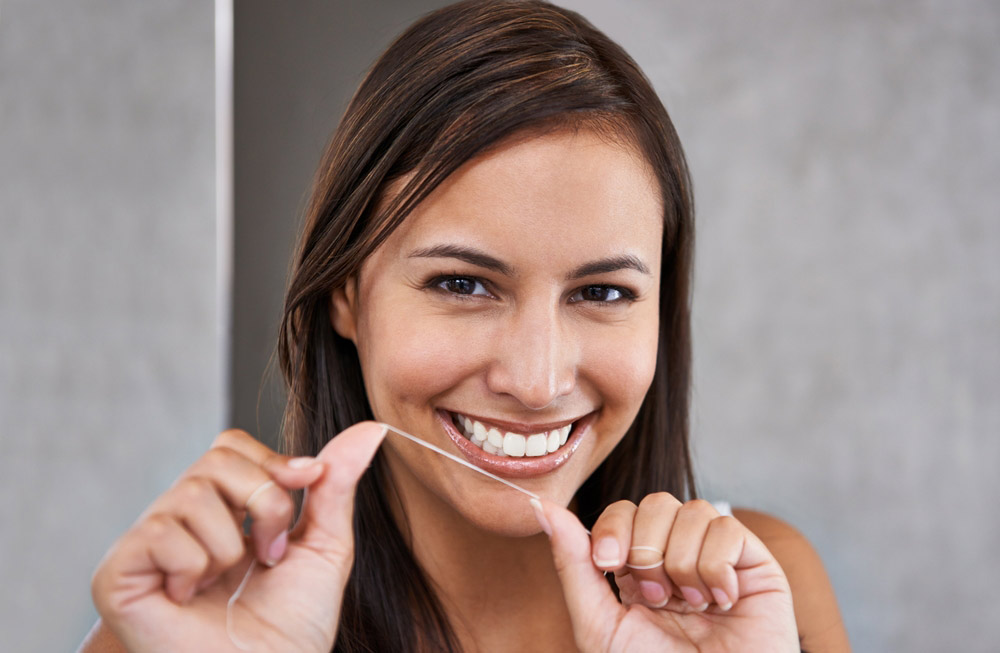
Blog Summary:
This blog clarifies the optimal order for your oral hygiene routine: flossing before brushing.
- Floss First: Removes plaque and debris, allowing fluoride toothpaste to be more effective.
- Scientific Backing: Studies show flossing before brushing reduces plaque and boosts fluoride concentration.
- Timing Matters: Floss once daily, ideally 30-60 minutes after eating/drinking to protect enamel.
- Braces Benefit: Flossing first is crucial for braces wearers to target hidden plaque.
- Proper Technique: Follow a 5-step process for effective flossing.
Sometimes, the order in which you do things matters just as much as how you do them.
This is important in mathematics (think about the order of operations, or PEMDAS). It’s important in building homes, where you must lay a foundation before building walls. And it’s important in personal and dental care too.
Following the correct oral hygiene routine order is crucial for maintaining healthy gums and preventing the buildup of plaque. So, do you floss before or after brushing? Generally speaking, it’s better to floss first. Learn more below.
Why Flossing Regularly Matters
90% of Americans recognize that preventative oral care is not only good for your health, but also your finances, but only 50% of children floss once a day, according to the Delta Dental 2024 State of Oral Health Report.
This is unfortunate, because regular flossing helps reduce gum disease and also curbs bad breath by removing plaque that contributes to it.
So how do you get as much plaque out of your mouth as possible? Flossing before your brush might just be the answer.
Floss Before Your Brush: It’s Better for You
A recent study compared results of those who brush first and then floss to those who floss first and then brush using the Rustogi Modified Navy Plaque Index and fluoride concentrations, measuring amount of plaque removed and amount of fluoride (from fluoride toothpaste) remaining, respectively.
The result? People who flossed first showed a significant reduction of interdental and whole plaque as well as a higher concentration of fluoride.
In other words, when compared to brushing and then flossing, flossing and then brushing removes more plaque from the mouth. It also enables users of fluoride toothpaste to better reap the associated benefits, because most people rinse their mouths out after flossing, which rinses away fluoride.
When to Floss
You should aim to floss at least once a day. While it doesn’t necessarily matter if you floss in the morning or at night, it is imperative that you wait between 30-60 minutes between eating or drinking and brushing (or flossing).
That’s because it’s during this time window that your mouth is most acidic. You don’t want to irritate your gums or spread around acidic saliva that can, over time, wear away enamel.
Therefore, dentists recommended that you floss first thing in the morning, before eating, and right before bed, at least 30-60 minutes after eating.

For Patients with Braces, It’s Even More Important to Floss First
The American Association of Orthodontists echoes the importance of flossing before brushing for those who wear braces, which can cause excess food and plaque buildup. For these patients, it’s crucial to:
- Target hidden areas and small spaces where brushing alone is not sufficient
- Preserve tooth enamel by eliminating plaque and bacteria that erode it
- Prevent gum disease by removing plaque that would otherwise accumulate between the teeth and along the gumline
- Decrease bad breath due to trapped food particles
- Prevent other oral health issues such as mouth sores, cavities, and periodontal disease
Pro Tip: Try SuperMouth Ortho floss to make flossing with braces easier!
How to Floss Properly
Here’s how to floss the right way in 5 steps. For more information see my blog post “How Often Should You Floss? Learn How to Floss Properly”.
- Measure and Prepare: Use about 18 inches of floss, winding it around your middle fingers, leaving a 1-2 inch section for working between teeth.
- Get a Secure Grip: Hold the floss tautly between your thumbs and index fingers to ensure precise control.
- Insert Gently: Carefully guide the floss between your teeth using a gentle back-and-forth sawing motion.
- Follow Your Gumline Contour: Form the floss into a “C” shape against each tooth, sliding it gently under the gumline as far as comfortable.
- Use Fresh Floss for Each Gap: Use a clean segment of floss for each interdental space, and repeat as needed to remove all debris.
Floss Smarter with SuperMouth
Looking for a safe and effective dental floss that’s dentist-created and kid-approved? I recommend SuperMouth floss for kids and adults. It’s enhanced with nano-hydroxyapatite and vitamins D3 and K2 for optimal oral health, and is even available with or without fluoride for extra anticavity protection.

